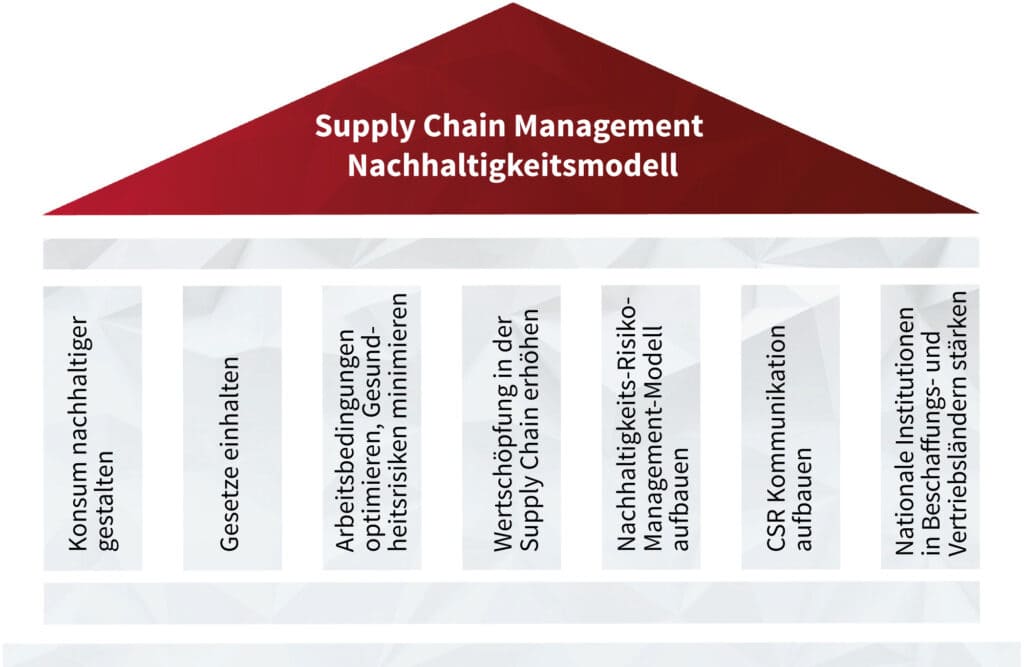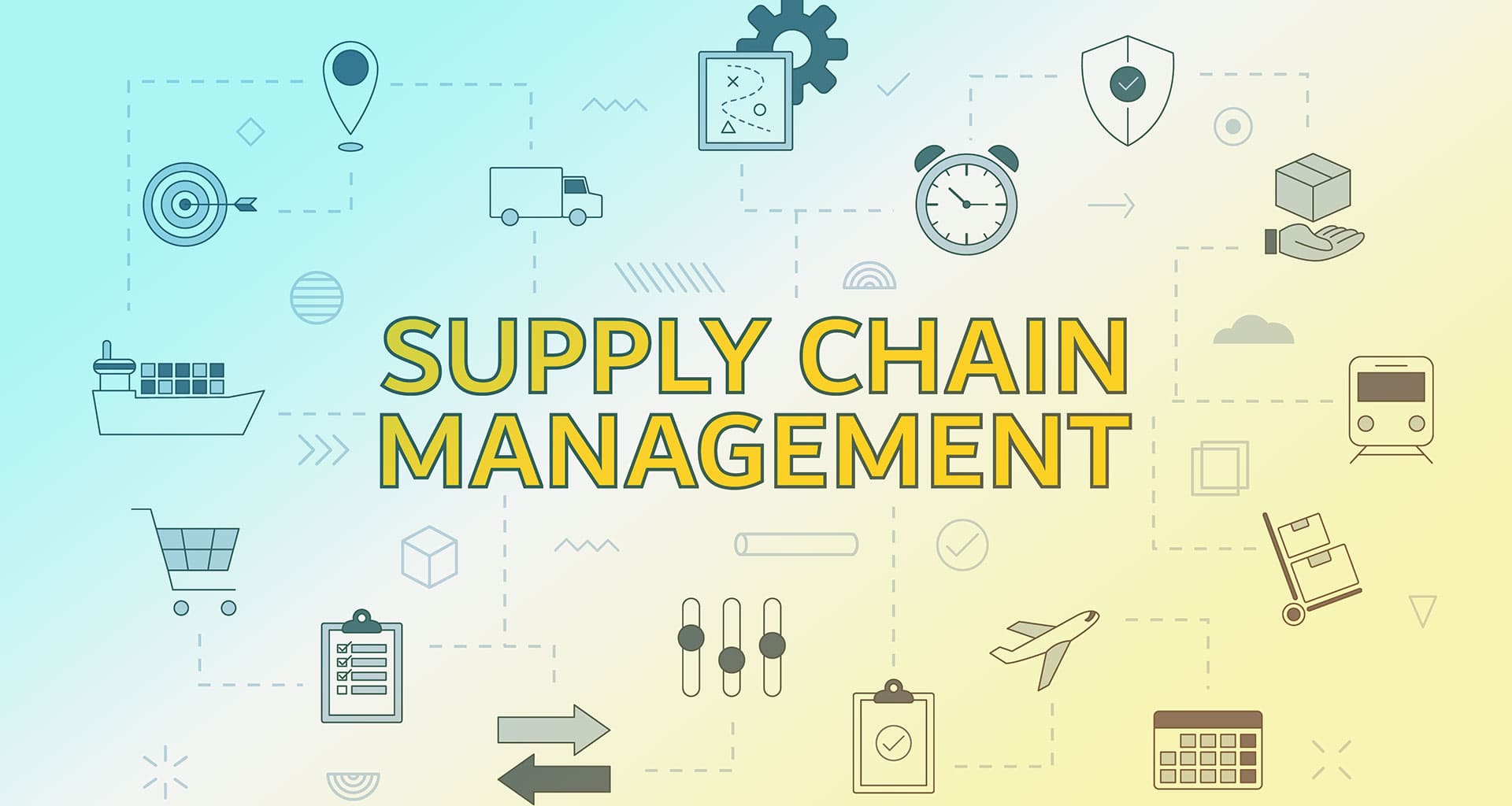Definition: What is SCM / Supply Chain Management?
SCM or supply chain management refers to supply chain management, i.e. the control and regulation of the entire value chain. This includes, among other things, the procurement of raw materials, production, but also logistics and delivery. All processes are monitored and a smooth flow is guaranteed.
Get your free whitepaper now!
“Guide: Sustainable Supply Chain Management”
What does sustainability mean?
In summary, sustainability means that we are able to satisfy our own needs without endangering the resources of future generations. In doing so, it is possible for the following generation to meet their own needs without impairment. Social and economic resources play just as important role as the resources provided by our environment.
Case study: What is a sustainable supply chain?
Sustainability in SCM refers to companies' efforts to consider the impact of their products on the environment and people as they move through the supply chain. Thus, sustainable SCM considers, among other things, the procurement of raw materials, production, storage, and suppliers / delivery, up to and including all transport routes in between.
A case study of a sustainable supply chain from the textile industry:
- Classic medium-sized company, 120 million euros in annual sales.
- Manufacturer of high-quality workwear and safety clothing.
- Main export market and customers currently still Europe, expansion to Asia and Africa under massive development.
- Sourcing markets worldwide, especially from countries with major sustainability challenges (India, North Africa, South and Central America).
- Research & development and design remain in Europe, while the labor-intensive steps of manufacturing (i.e. cutting, sewing, packaging) are mostly carried out in minimum-wage countries.
So the business model is nothing out of the ordinary. Numerous companies in the DACH region exist in this or a similar way. Supply chain cost optimization and sustainability go hand in hand in our example. Globalization and expiring trade restrictions, legal requirements, growing ECO platforms in e-commerce are significantly intensifying competition and cost pressure in the textile industry. However, the costs can only be passed on to the end customers to a limited extent.
The 7 core pillars of the right supply chain management sustainability model
It is important that sustainability is always considered along the entire supply chain. Starting with the research and development involved, through marketing and sales, logistics, production processes and, of course, the procurement of raw materials and supplies, semi-finished and finished products, plant and machinery, and energy. The 7 core pillars of the supply chain management sustainability model should always be kept in mind:
- Shaping consumer behavior more sustainable
- Comply with laws regarding due diligence, human rights, environmental protection and animal welfare
- Optimize working conditions and minimize health risks for all employees involved along the entire supply chain
- Increase value creation in the supply chain
- Establish sustainability risk management model (KPIs and early warning systems)
- Establish CSR communication (clearly communicate your strategy, present your sustainability model - Do good and talk about it -, conduct stakeholder dialogues and establish sustainability reporting).
- Strengthen national institutions in procurement and distribution countries and thus at the same time consolidate your position as a company in these countries

Explanation: Consumption, value creation and the sustainability risk management model
For the sake of clarity, we would like to discuss the three most important pillars of the SCM sustainability model below. This should help to make sustainability in a supply chain tangible and understandable.
Consumption
Labels that are mentioned in this context are: Green Button & Clarity, Sustainability Compass. Here, in addition to the manufacturer, the consumer is also called upon to actively participate. Away from "fast fashion", the counter-trend - slow fashion - green & eco fashion - fair trade is addressed. Of particular importance are high-quality materials, long life, eco-textiles and recyclable materials.
This is countered by the fact that in the textile industry, the HACCP system (Hazard Analysis Critical Control Points) requires certain standards to be met, i.e. boil-proof, colorfast, non-flammable, non-toxic chemicals, etc. This information is noted accordingly in the labels and is used by manufacturers as a quality feature to make consumers aware of this added value.
Added value
Adding value is another indispensable pillar of sustainable supply chain management. It all starts in development through to design and marketing. This is how you lay the foundation for how sustainably a product can be manufactured, packaged and delivered. Groundbreaking details are already decided at the product design stage: these include, for example, the materials used and the packaging. But the manufacturing process and thus the consumption of chemicals, energy and water are also an important part of the value chain.
This includes contamination risks of water, air, soil (e.g. when dyeing the fibers). Residues, e.g. microplastics. Recyclability of the products.
To stay with the example of the textile industry: Especially the processes of fiber production and textile manufacturing are strongly influenced by chemical treatment (like bleaching and dyeing), wet processes, processing and finishing by knitting, weaving, warp knitting. For sustainable supply chain management, your goal should be to optimize resource consumption and develop "cleantech products".
Textile production already relies heavily on digitization. For example, lasers monitor the quality of production, e.g. to find tears in the textiles. High quality and targeted monitoring mean fewer rejects and thus cost optimization. This is where realtime quality control comes into play. It enables immediate intervention in the control process in the event of malfunctions.
Another point at which the sustainability of a supply chain can be improved is continuous efficiency measurement of energy and water consumption. Although the technology requires initial investment, it pays for itself relatively quickly.
In summary: Minimal scrap due to holistic quality controls, optimized energy consumption, waste towards zero allow them to be more sustainable.
Planning, management and control of a risk management model
This is where e2e (end-to-end) integrated planning & collaboration become increasingly important! The best possible sales planning and the integration of these planned values into the supply chain reduces unnecessary inventory build-up or even the waste of materials and energy for the wrong products.
E2e visibility through collaboration platforms focused on exceptions management allow ad hoc solutions to disruptions along the entire supply chain and implement them in real time.
In order processing and accounting, digital CRM solutions, intelligent VMI solutions and factoring/reverse factoring models (upstream and downstream) save vast amounts of paper for orders, purchase orders, invoices and complaints, as well as energy for countless reconciliation processes via email, cell phone, etc.

Sustainable supply chain management: The right logistics, the key to success
Logistics in the age of e-commerce with minimal shipment sizes, mostly single items, poses a special challenge. In addition to physical transport optimization, package optimization as such is required above all. The goal is to transport no air and achieve optimal utilization of freight while correctly providing all required documents.
Critically examine your value chain structure, especially before you go digital. Ask yourself and your team: Do we have the right supply chain strategy? How efficient and sustainable are our structures and processes?
Consider the entire supply chain including your co-packers, 3rd PL, co-manufacturers! And of course your distribution channels to the customer markets (in the textile sector for workwear and special clothing, these are e.g. specialist department stores, retailers, discounters, online trade). Is the logistics of the "last mile" optimally and sustainably aligned?
How do I set up sustainability risk management?
Sustainability risk management with KPIs and early warning systems is of particular importance to measure and improve your set targets.
- Define KPIs and tolerance intervals for deviations for each individual process step, for all stakeholders
- Define the relevant processes (e.g. innovation, design to value, phase in - phase out)
- Designate process owners with clear responsibilities
- Provide clear and hard rules (goal rules, action rules, time rules, performance rules) & a clear NO-GO policy
- Introduce rolling supply chain cost planning
- Establish quality early warning systems, also for your suppliers (check on site and delivery, not only after material receipt)
Sustainable supply chain management, the bottom line
For you, it should be noted that a consistent review and improvement of your supply chain processes and structures with the aim of achieving the greatest possible sustainability will allow you to leverage cost-saving potential and thus significantly improve your margins. Ultimately, you will succeed in significantly increasing your company value and delighting your customers.


